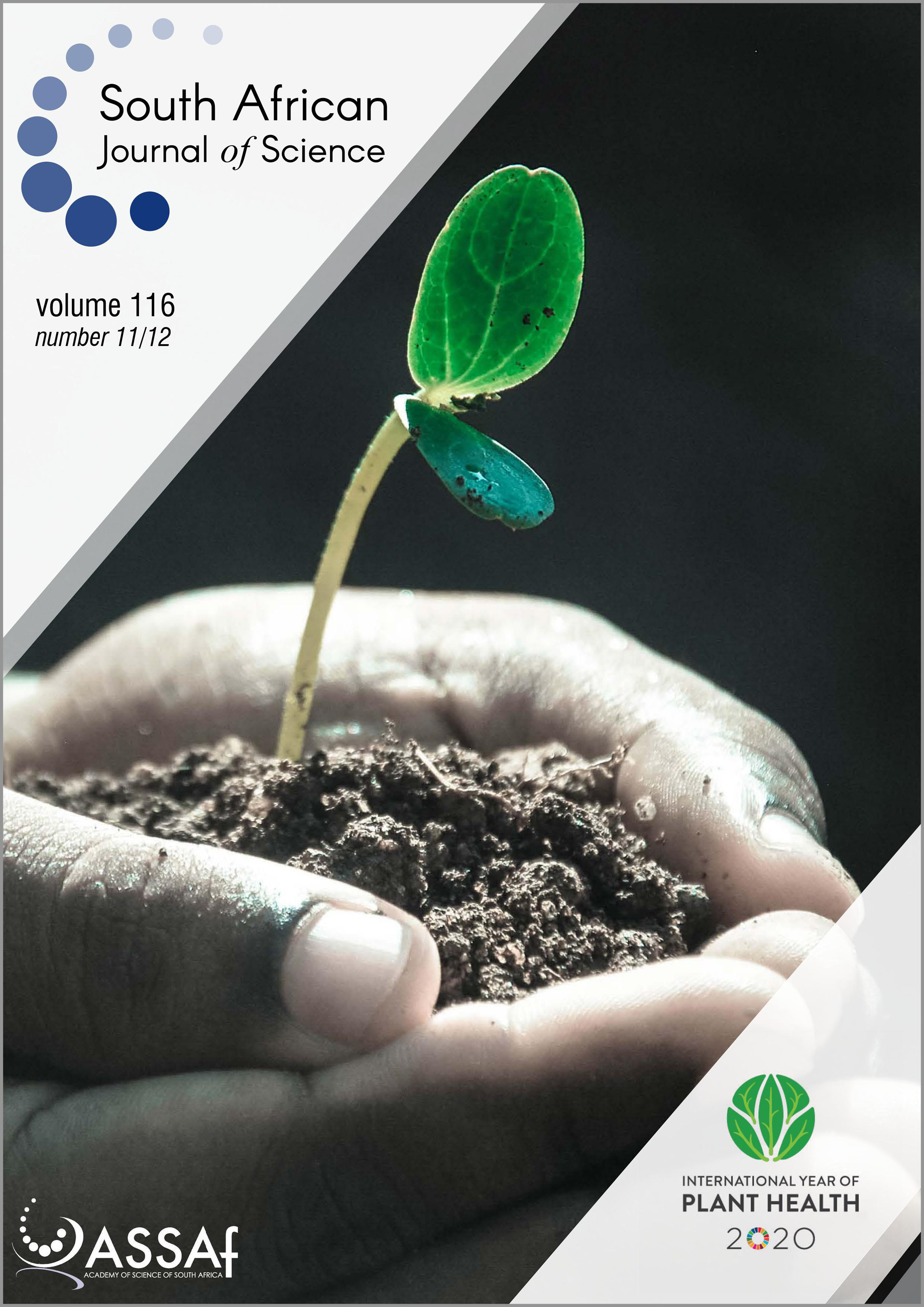Models for predicting pseudothecium maturity and ascospore release of Phyllosticta spp. in South African citrus orchards
DOI:
https://doi.org/10.17159/sajs.2020/7955Keywords:
ascosporic infection, pseudothecium maturation, epidemiology, temperature, moistureAbstract
Ascosporic infection plays a major role in the epidemiology of citrus black spot (CBS) in South Africa, a disease caused by Phyllosticta citricarpa. Phyllosticta pseudothecium maturation and ascospore release models have been integrated in infection models to predict the availability of the primary inoculum source. However, these models have not been validated on a broader data set and this study aimed to validate and improve these epidemiological models. New pseudothecium maturation and ascospore release models for P. citricarpa were developed, based on weather and ascospore trap data from 13 locations and up to five seasons. From the 29 data sets analysed, 3775 3-hourly periods with ascospore events were recorded on 1798 days; 90% of these events occurred between 16.0 °C and 32.1 °C (daily Tmin and Tmax of 15.4 °C and 33.5 °C, respectively) and 75% occurred above a relative humidity (RH) of 55.9% (daily RH > 47.9%). Rain was recorded during 13.8% of these ascospore events and 20.0% of ascospore days. Using logistic regression, a Gompertz model that best predicted pseudothecium maturation, or the probability of onset of ascospore release, was developed and was markedly more accurate than the previously described models. The model consisted of DDtemp [cumulative degree-days from midwinter (1 July) calculated as (minimum + maximum daily temperature) / 2 – 10 °C] and DDwet (DDtemp accumulated only on days with >0.1 mm rain or vapour pressure deficit <5 hPa) as variables in the formula: probability of first ascospore event = exp(-exp(-(-3.131 + 0.007 × DDtemp - 0.007 × DDwet))). A Gompertz model [PAT = exp(-2.452 × exp(-0.004 × DDwet2))] was also developed for ascospore release; DDwet2 = DDtemp accumulated, from first seasonal ascospore trap day, only on days with >0.1 mm rain or vapour pressure deficit <5 hPa. Similar to the DDwet2 model described in a previous study, this model adequately predicted the general trend in ascospore release but poorly predicted periods of daily, 3-day and 7-day ascospore peaks.
Significance:
- We developed a new pseudothecium maturation model from 29 data sets, comprising different climatic regions in South Africa, and validated previously published models. The new model was markedly more accurate in predicting the onset of ascospore release and can be used to improve existing CBS epidemiological models and improve risk assessment and management of CBS in South African citrus orchards.
Published
Issue
Section
License

All articles are published under a Creative Commons Attribution 4.0 International Licence
Copyright is retained by the authors. Readers are welcome to reproduce, share and adapt the content without permission provided the source is attributed.
Disclaimer: The publisher and editors accept no responsibility for statements made by the authors
How to Cite
- Abstract 607
- PDF 636
- EPUB 209
- XML 303












.png)